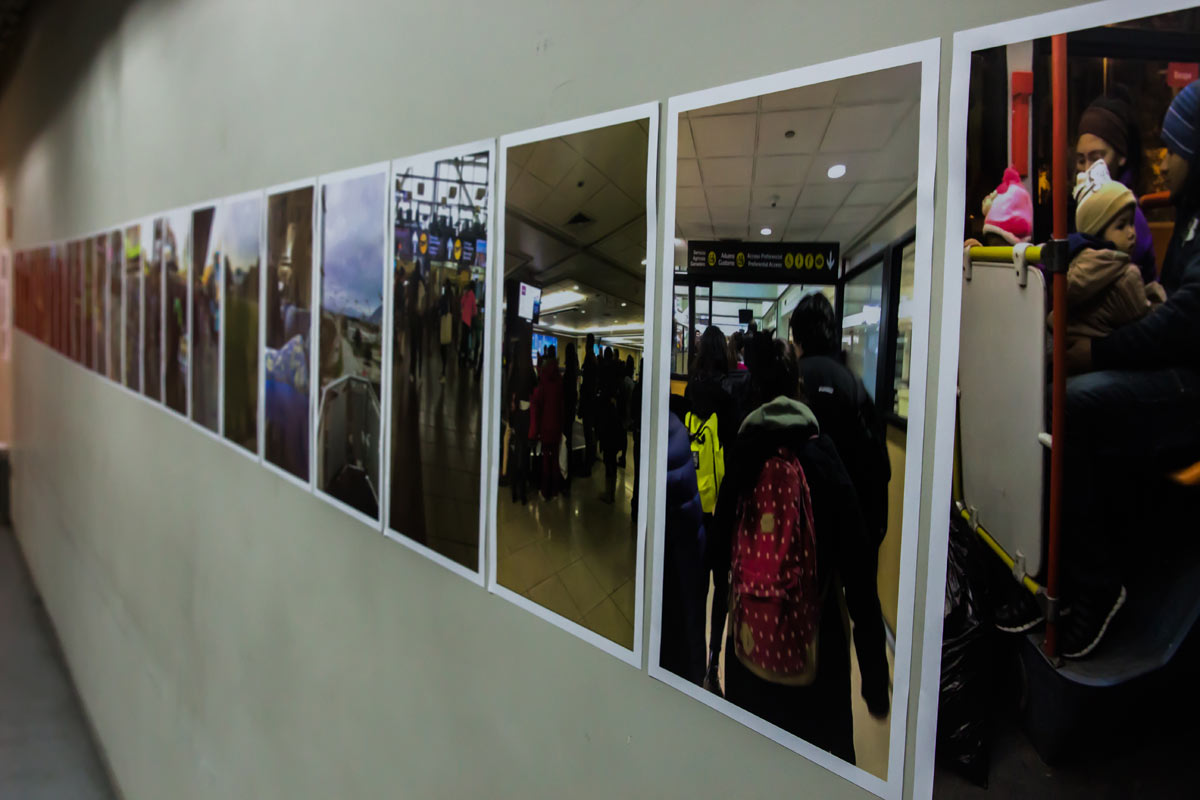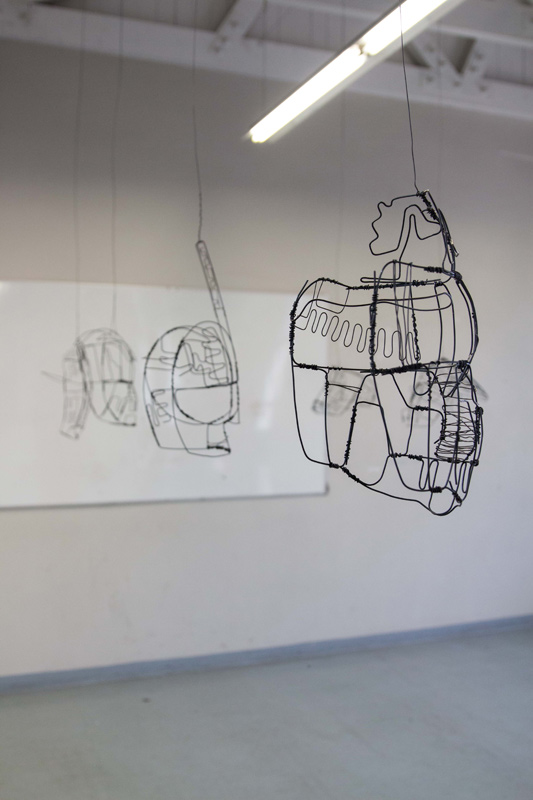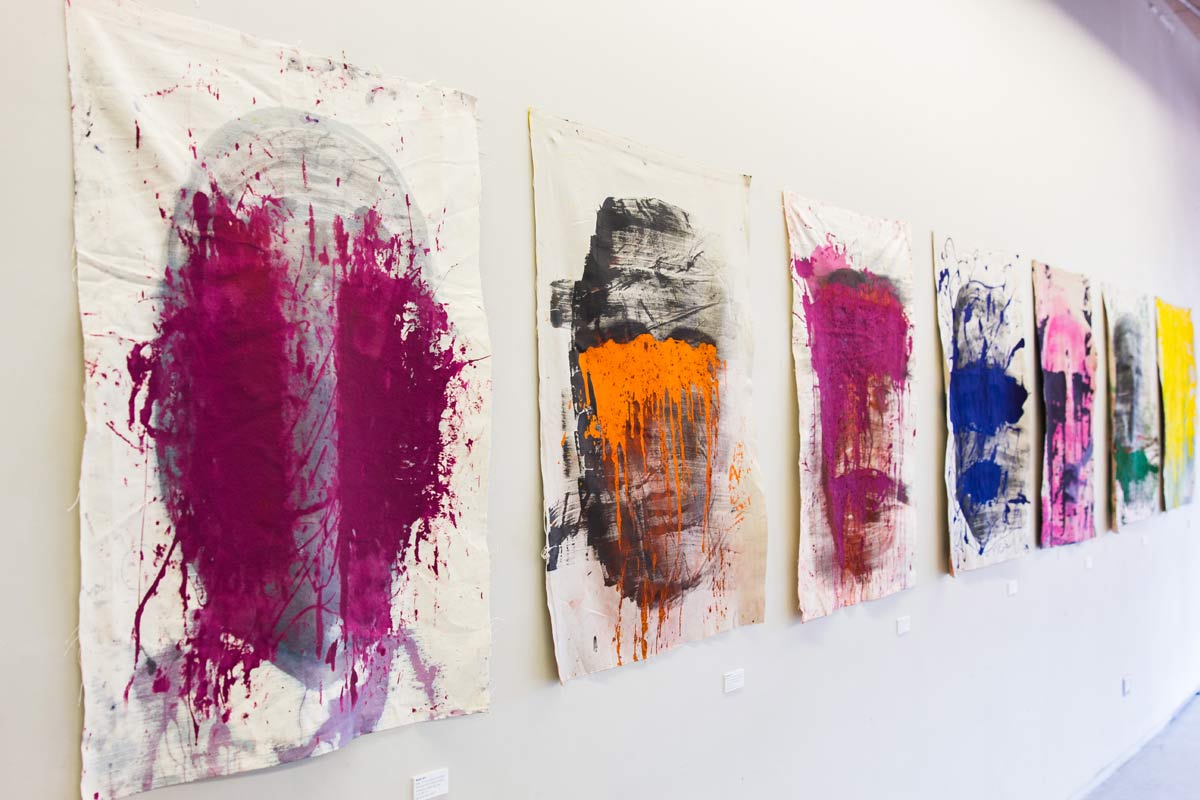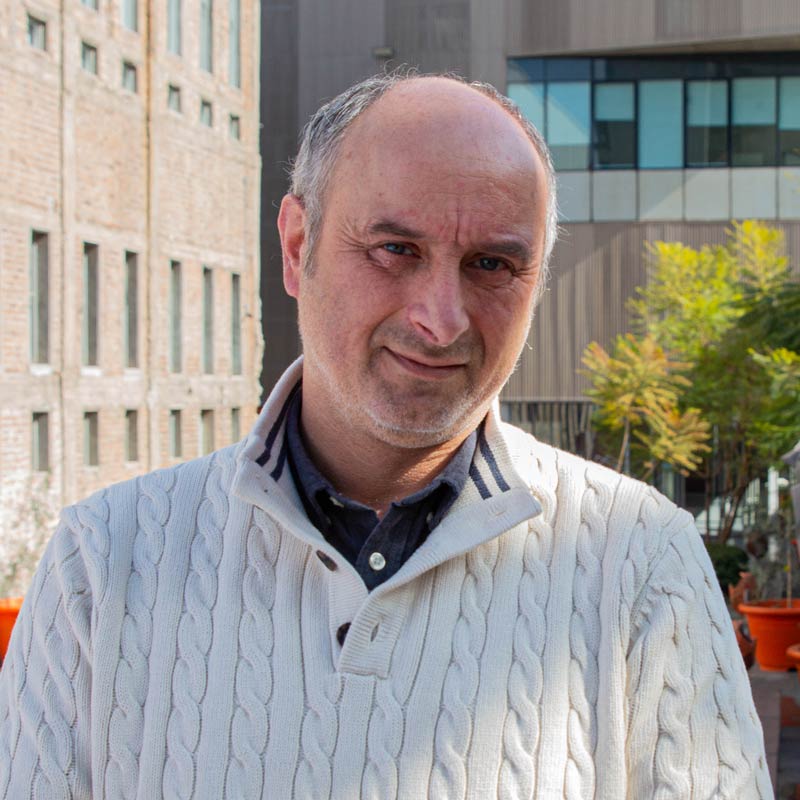




Visual Arts
A proposal that renews the training models for new artists: Visual Arts at UNAB's Creative Campus.
Degree
Bachelor's Degree in Visual Arts
(8 semesters)
Professional Degree
Visual Artist
(8 semesters)
Duration
Four years
Campuses
Santiago
We train artists for a changing world who understand the current importance of creativity.
- Program Description
- Why study this career at the Creative Campus
- Characteristics of the Creative Campus Visual Artist
- Occupational Field
- Graduate Profile
- Career plan (decree)
- The Visual Arts program is defined as a school connected to the specific work of the visual arts in a broad and multiple sense.
- Responding to cultural changes in different local and global territories and their expressions through the arts. A career where faculty actively participate in the practice of the arts and the cultural scene.
- Responding to the transformations inherent to training in the visual arts, recognizing interdisciplinarity as a factor inherent to the discipline itself.
- The learning-focused student training model supports the student’s interests and abilities through a project culture and critical thinking, relevant issues for the practice of visual arts.
- To achieve this purpose, it has an infrastructure of workshops and labs that allow students to experiment in different formats, such as audiovisual, virtual, and multiple analog formats, and in technical resources such as ceramics, engraving, and textiles, as well as first-class tool workshops.
- Finally, students develop in an environment that promotes and designs an interdisciplinary experience through specific projects at different levels throughout their career, which allows them to enhance interdisciplinary teamwork, have international experiences, and understand project management models that link them directly to the environment in which creative disciplines develop.
- Graduates of the Creative Campus Visual Arts program have the learning, skills, and tools necessary for performing in different creative areas.
- They receive training that allows them to create in the visual arts according to their interests and potential, as well as working in teams and developing multidisciplinary projects.
- Visual Arts graduates have knowledge and tools in management, which allows them to develop in different areas of the arts and creative work.
Graduates of the Universidad Andrés Bello Visual Arts program will be able to work as mediators or managers of autonomous and institutional cultural projects such as museums, galleries, cultural centers, and governmental organizations; participate in projects with multidisciplinary teams, and teach in the field of visual arts or arts in general.
Graduates of the Universidad Andrés Bello Visual Arts program are professionals capable of developing and managing projects for creating works in different contexts, from an analytical and critical point of view, using multiple resources and technical and technological means.
They use creative disciplines as a tool to manage knowledge at a local and global level, developing proposals and projects from an interdisciplinary perspective.
Visual Arts graduates master the principles and fundamentals of visual language in its different dimensions. From this, they build artworks and projects based on developing individual or collective creations.
The curriculum of the Visual Arts program at Universidad Andrés Bello organizes its Learning Outcomes in the following Action Areas:
I. Field of Action: Interdisciplinary Culture Projects
- RdA 1.- Integrate and synthesize the main phenomena, discussions, conflicts, and changes that determine today’s contemporary cultural reflection in different fields of knowledge
- RdA2.- Use management tools to evaluate the generation of sustainable, innovative proposals in developing projects and enterprises.
- RdA 3.- Create procedures and products through conceptual and technical resources to work in and integrate disciplinary and interdisciplinary contexts.
- RdA 4.- Design projects based on interdisciplinary issues that contribute to responding to complex phenomena in specific contexts.
II. Field of action: Visual Arts Projects
- RdA 1.- Construct analytical and critical points of view, based on the reflection of history and visual culture, for the interpretation of the disciplinary field and the foundation of artistic creation and production.
- RdA 2.- Experiment with processes, media, and techniques for applying and using visual language in artistic or art production.
- RdA 3.- Utilize technology for the projection, communication, and visualization of works, processes, and projects.
- RdA 4.- Develop projects in different media, considering management, production, and artistic creation processes.
III. Scope of action: General Education and English
- RdA 1: Develop critical thinking through argumentation, using oral and written language appropriate to the academic and professional environment, and using a method based on criteria, facts, and evidence.
- RdA 2: Relate academic training to the local environment from the principle of social responsibility, considering the ethical dimension of daily practices and everyday speech in professional practice.
- RdA 3: Develop research projects with their respective ethical considerations, according to quantitative and qualitative methodological approaches recognized by their disciplinary area, effectively utilizing information technologies.
- RdA 4: Develop communication skills in English to function in daily, work, and academic contexts.
Learn about the Visual Arts program curriculum, which belongs to the School of Visual Arts of the School of Architecture, Arts, Design, and Communications.
Download the decree here






